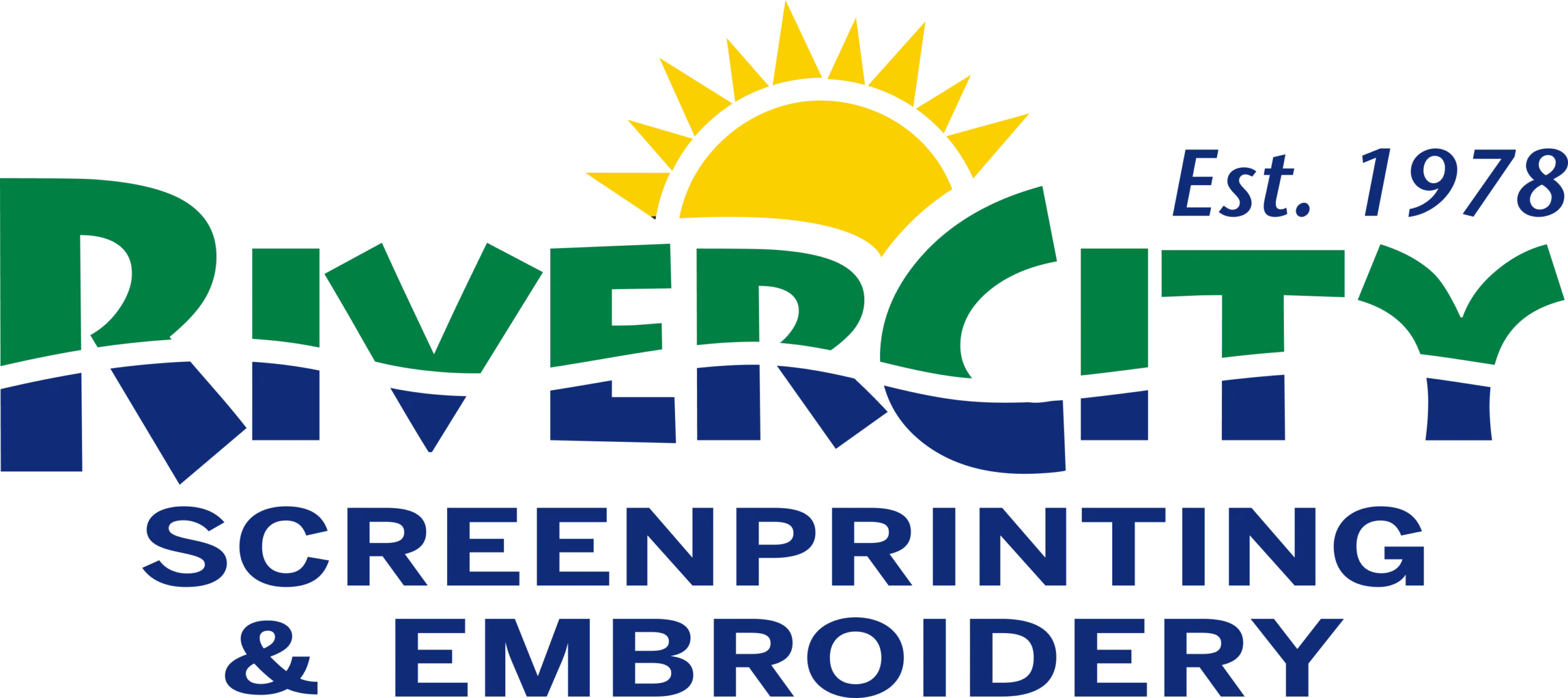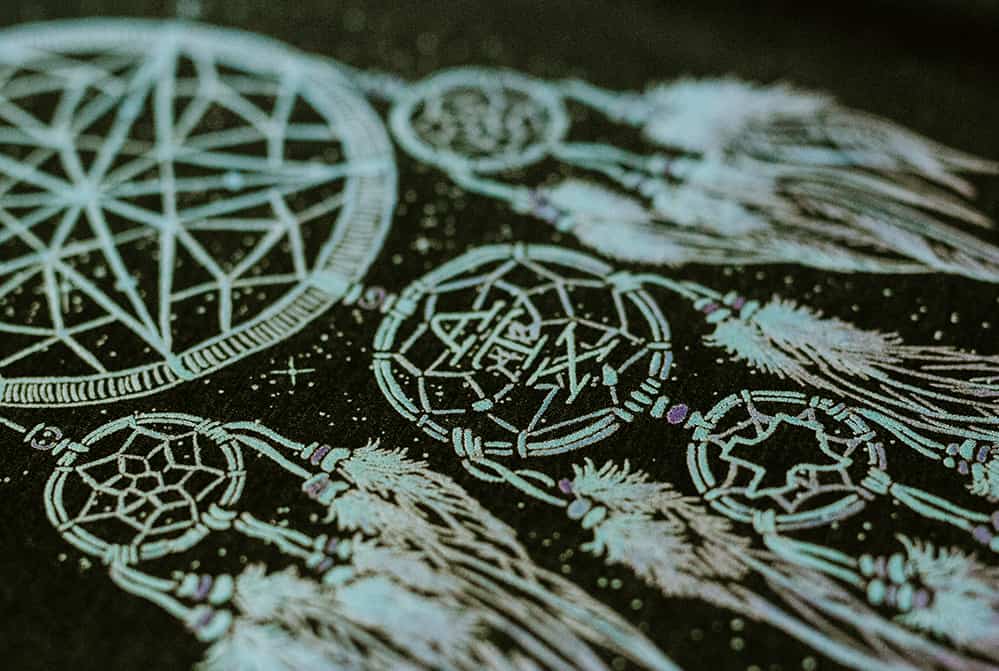When you need a design printed onto a garment or promotional item, you’ll have some printing options to choose between. Screen Printing has been used to transfer designs onto items for decades. More recently, Digital Printing, or Direct to Garment (DTG), has become a popular way to transfer highly detailed designs onto garments. Which method is best for your project?
Variations in Color
When deciding which printing method to use for your project, take a look at the colors you need for your design. Screen Printing and DTG handle colors differently, and both have their own specific benefits:
Screen Printing has more flexibility when it comes to design colors. Custom inks can be used, and even created, using customized pantone colors. This allows for the use of more vibrant colors, and the ability to find and use colors that match the original design accurately. Neon, spot color, glitter, and metallic specialty ink effects are also possible to use with Screen Printing. Artwork and logos that ‘pop,’ with clean and crisp lines, really shine with this process.
Digital Printing is generally more beneficial to use for photographic designs. This printing method does not use a screen. Instead, designs are transferred to a garment using a machine similar to an inkjet printer. This has benefits and disadvantages. The major benefit is that a digital printer can transfer highly detailed designs accurately. The greatest disadvantage regarding color is that Digital Printing machines use only 5 base colors: Cyan, Magenta, Yellow, Black (CMYK) and White. These can be combined to create a wide range of colors, but custom colors such as metallic ones and very vibrant neon colors cannot be created, since those are actual spot colors specially formulated and do not rely on CMYK mixing. Artwork with natural colors, photographs, and skin tones are usually best handled using this printing process as well. If you want artwork with neon colors, Digital Printing will tone those colors down because of the limited CMYK color spectrum.
Quantities
You’ll also want to decide on the quantity of items needed for your printing project. Depending on how many items you need printed, choosing Screen Printing or Digital Printing can affect the time it takes to fill your order, and the cost.
Screen Printing is usually more cost effective in bulk. The more you order using the same design, the less per item price the project becomes. This usually varies from printer to printer, so contact us and we can help you through this. The Screen Printing process has a screen setup that doesn’t really exist for DTG, but for larger bulk orders this process shines.
Digital Printing is often considered a faster option for smaller orders. Though it is faster (in the short run), depending on how large your image is, the time to print each shirt can vary drastically. The speed of items printed using the DTG method usually stays the same, and is minimally affected by setup times vs how many items are in your order. Because of this, Screen Printing is often recommended for those making bulk orders.
Choice of Garments
Additionally, the items or garment type that you need your design printed on can affect which printing method you should use for your project.
Screen Printing is the more flexible method as far as what can be printed on. Using Screen Printing, most fabric blends can have your design printed on them. This includes custom clothing and a variety of items as well, such as backpacks, canvas shopping bags, and most materials that can fit flat on the pallet that the screen goes on top of. Screen Printing is also the better option if your project requires printing on a dark material, as the plastisol inks used for this printing method show up well on dark fabric.
Digital Printing is not as versatile. Items printed must be flat enough to pass through the printer, which limits printable items to things such as t-shirts and decals. In addition, any projects that require printing on fabric must be done so on items with a specific fiber content. This is because the garments must be treated before they are printed in order to prevent adverse dyeing effects. We can help you decide which fabric will work best for your project.
For more information about which printing method would be best for your project, contact RiverCity Screenprinting in Austin, Tx and San Marcos, Tx.

